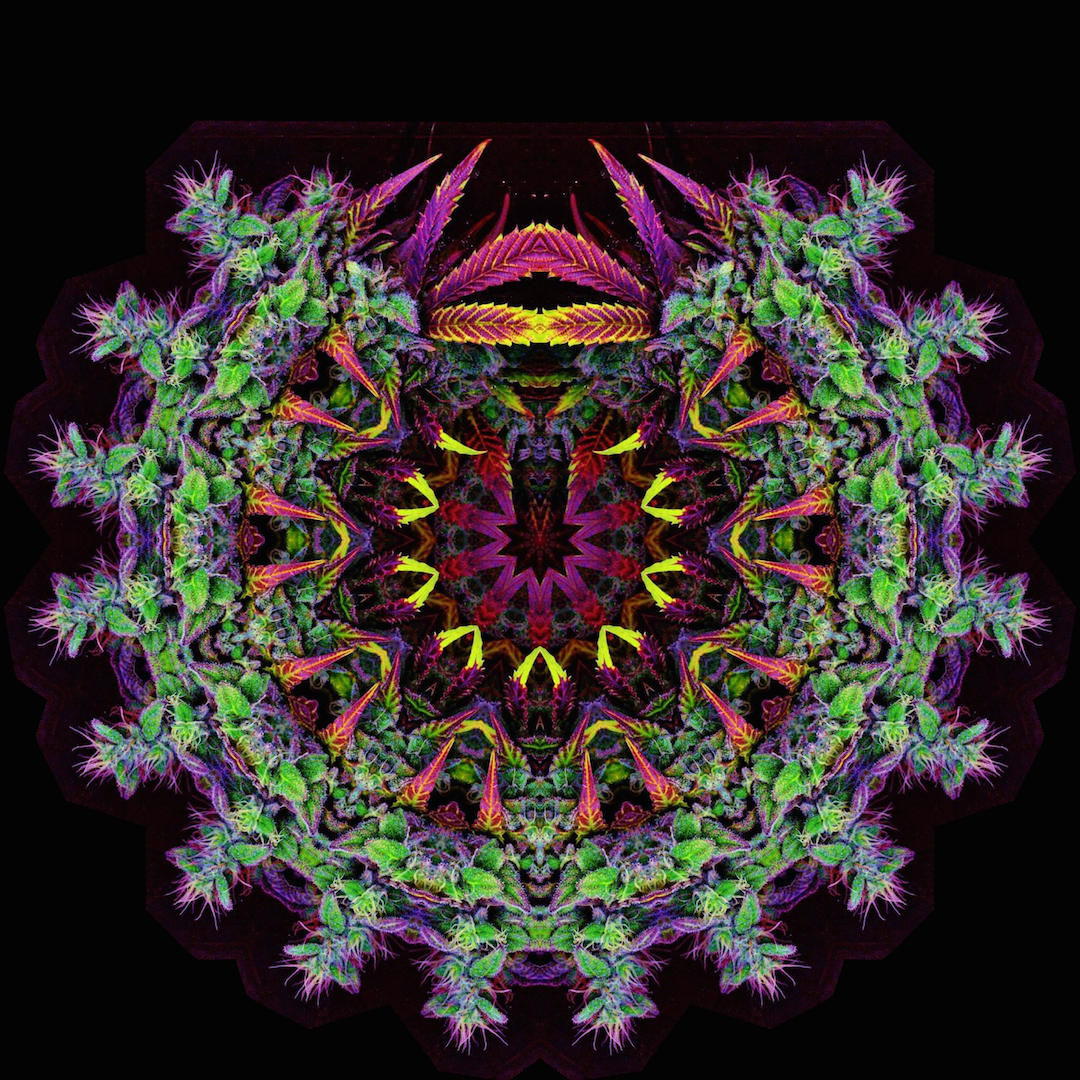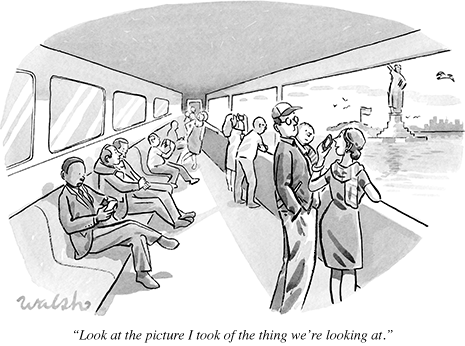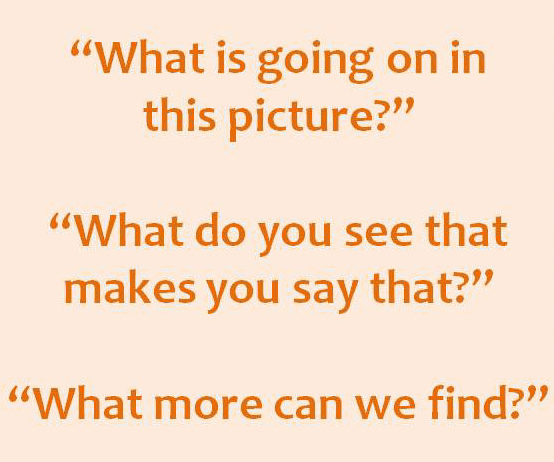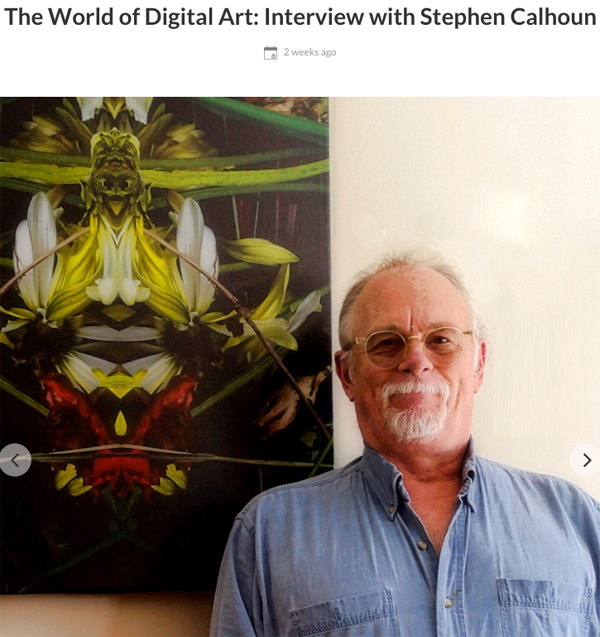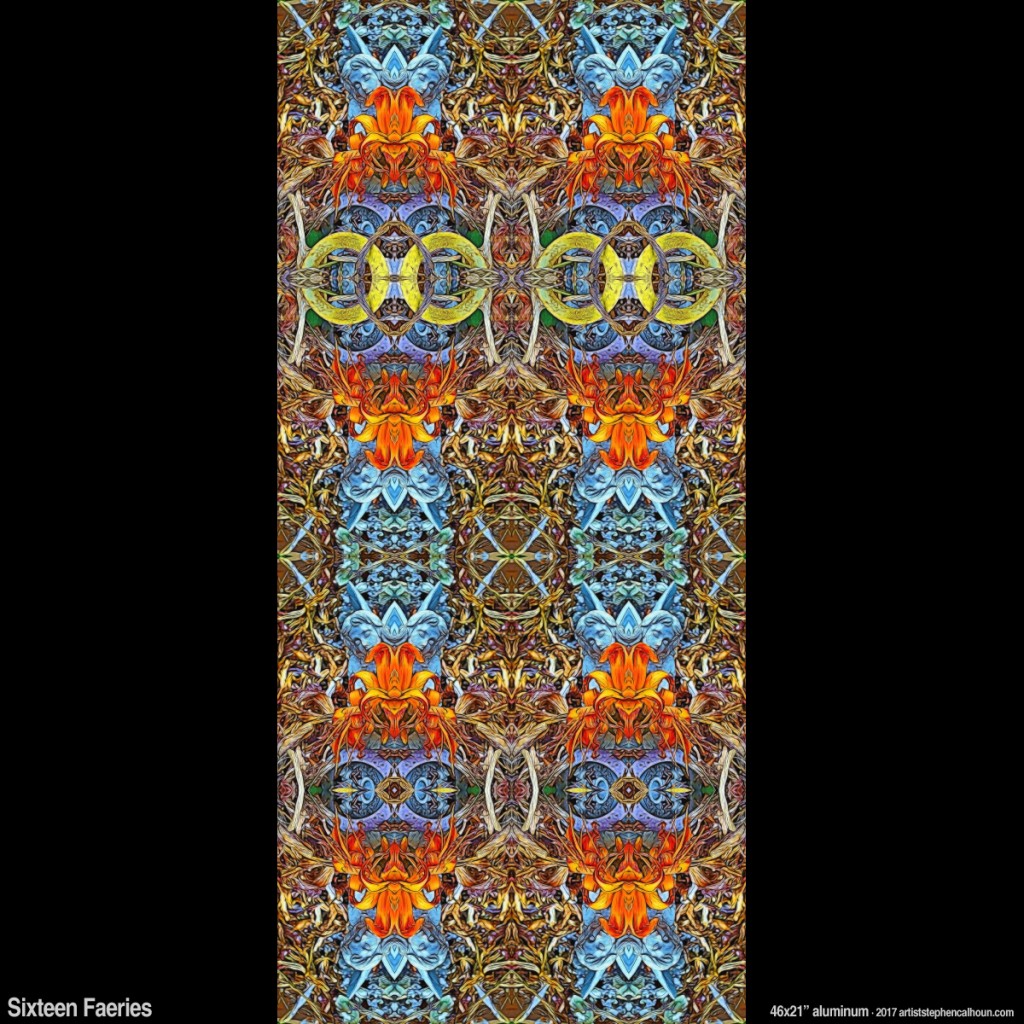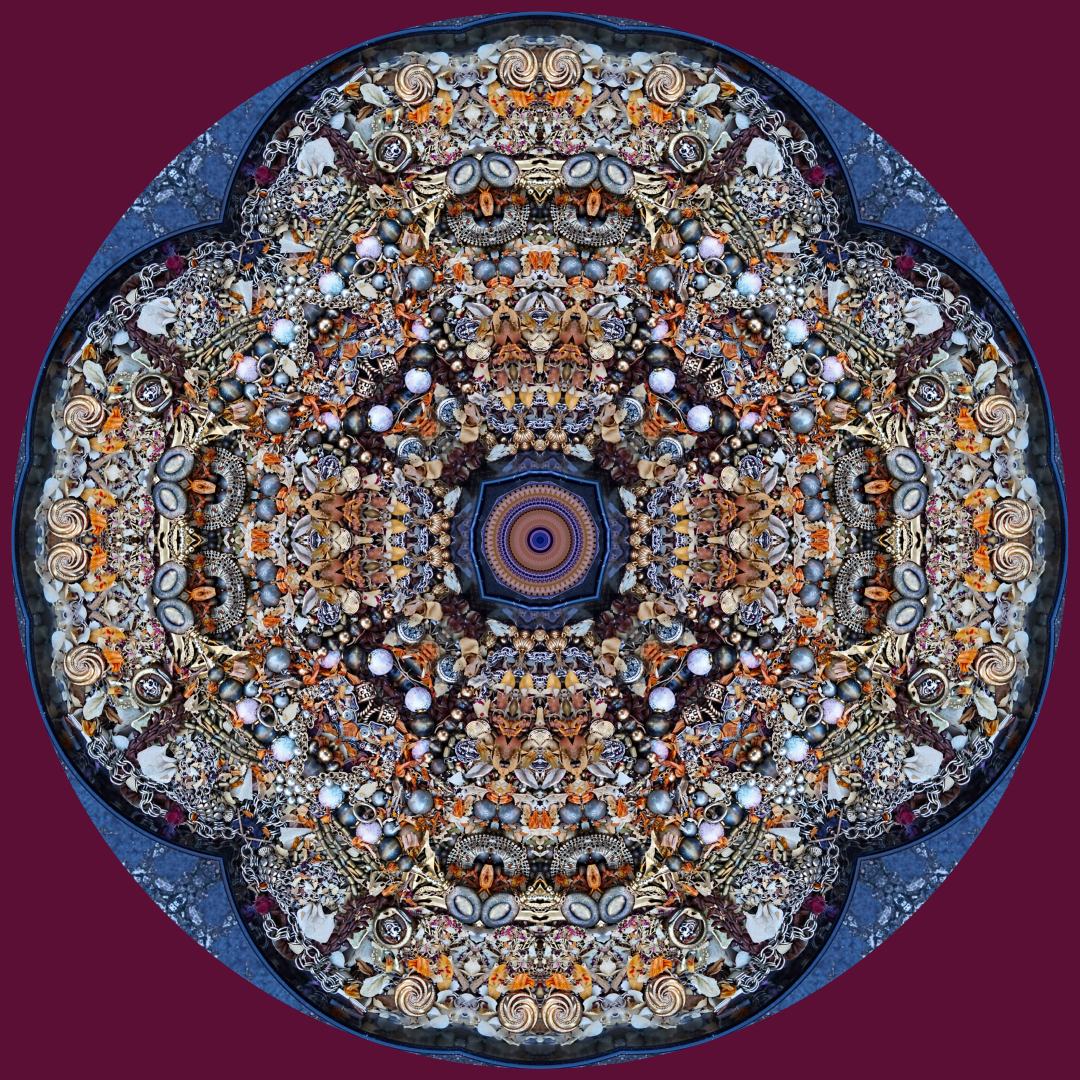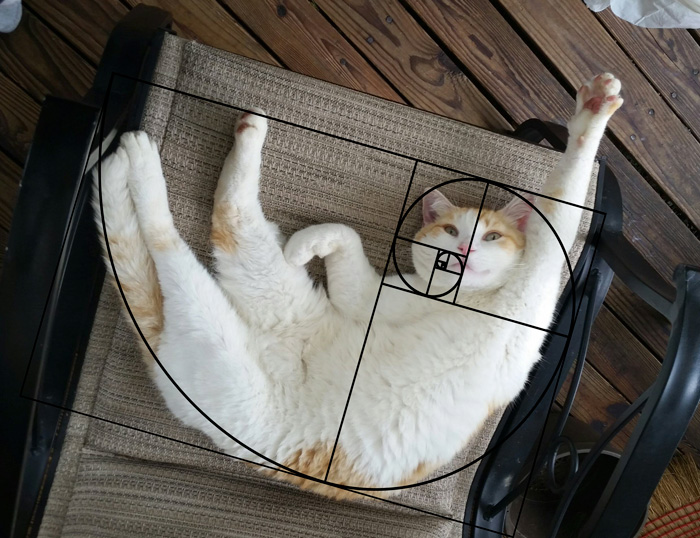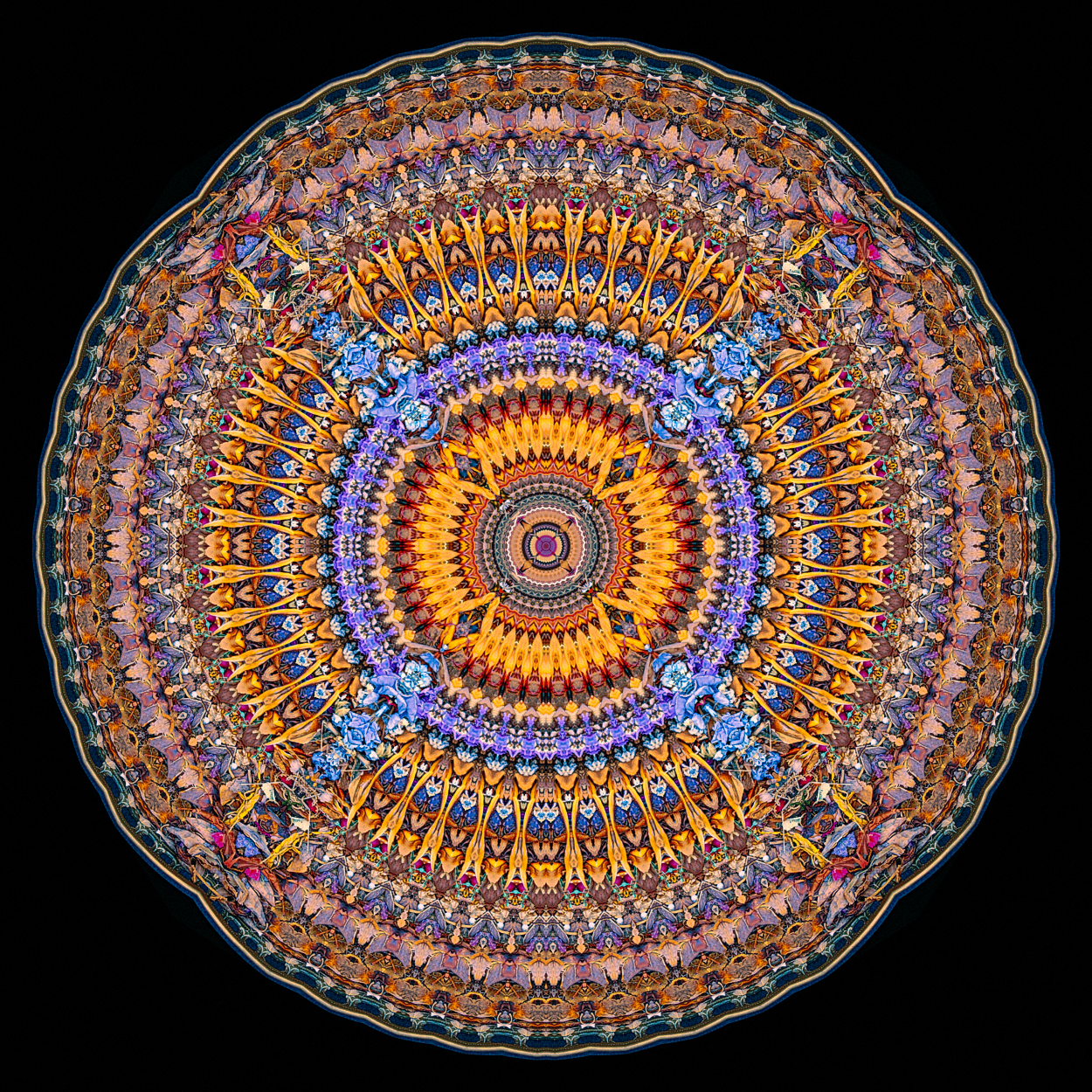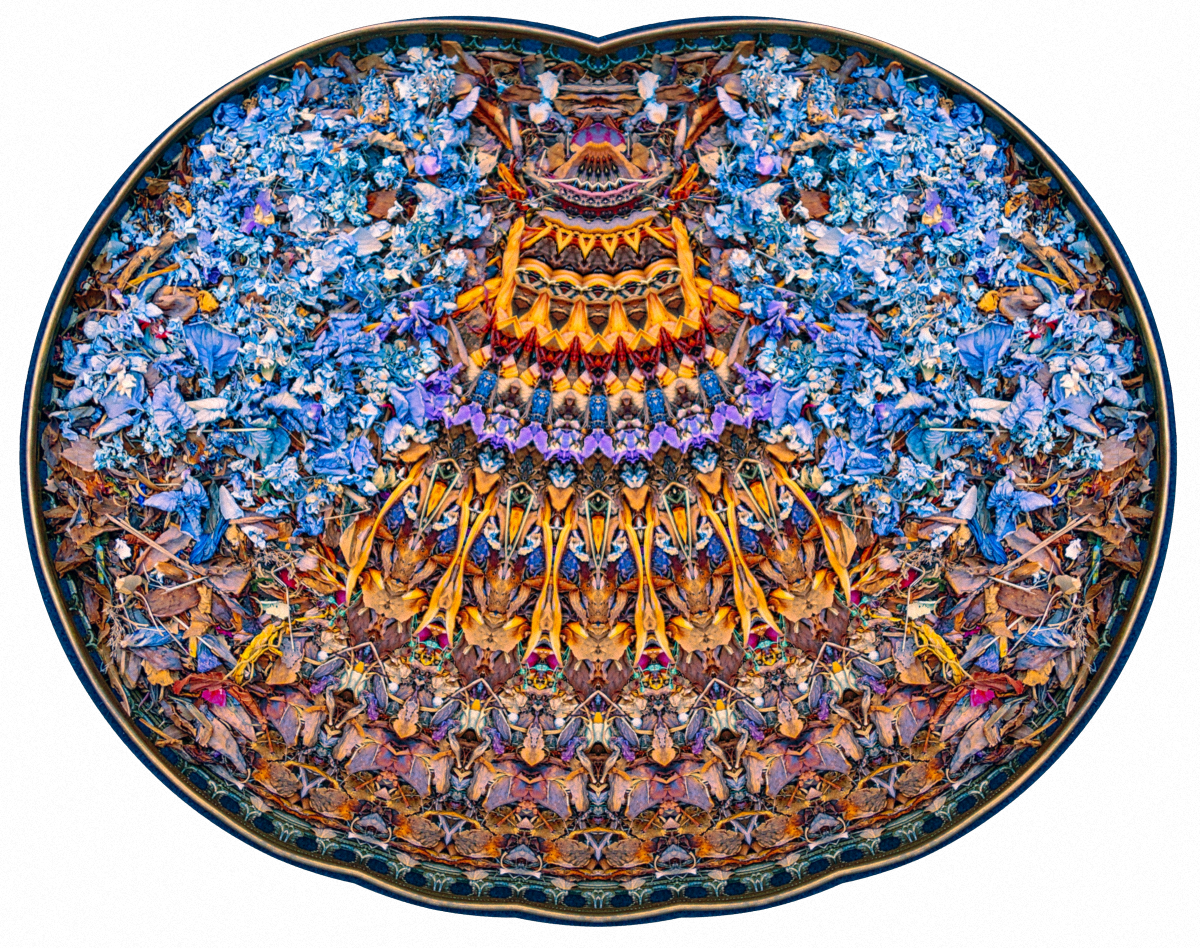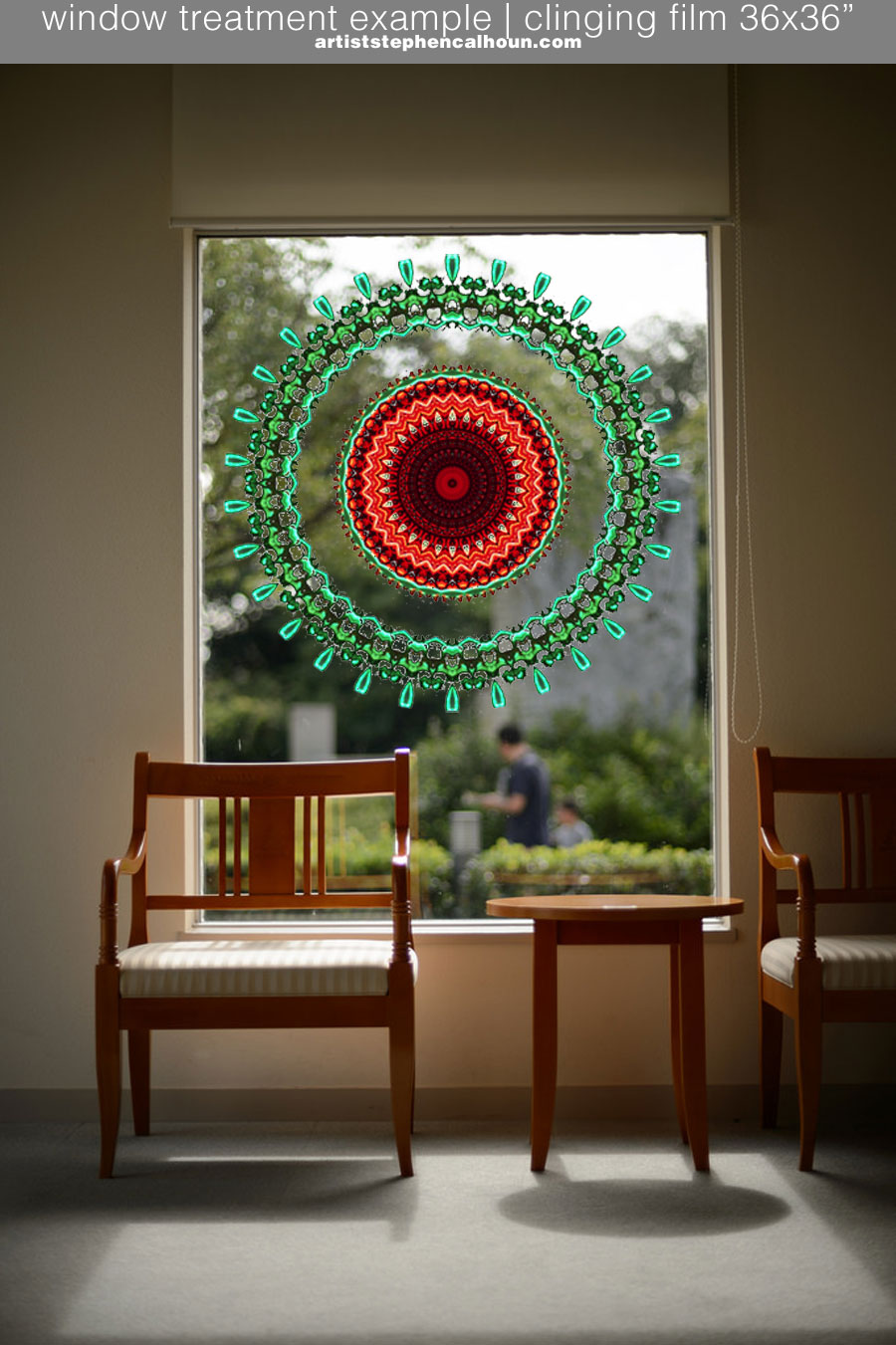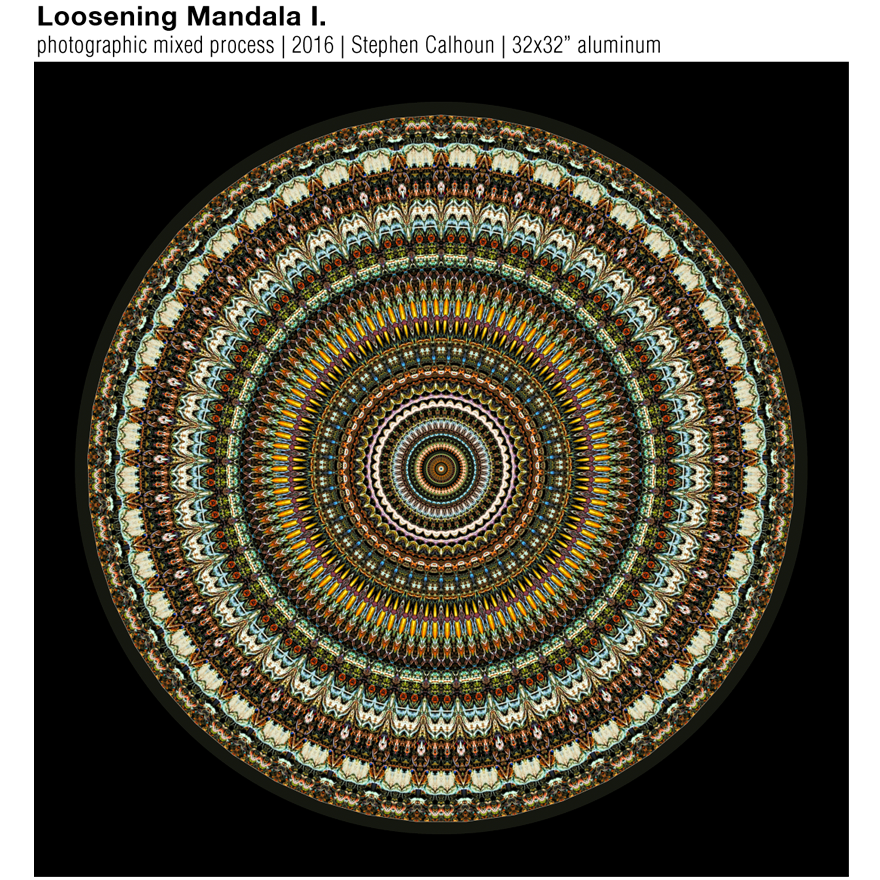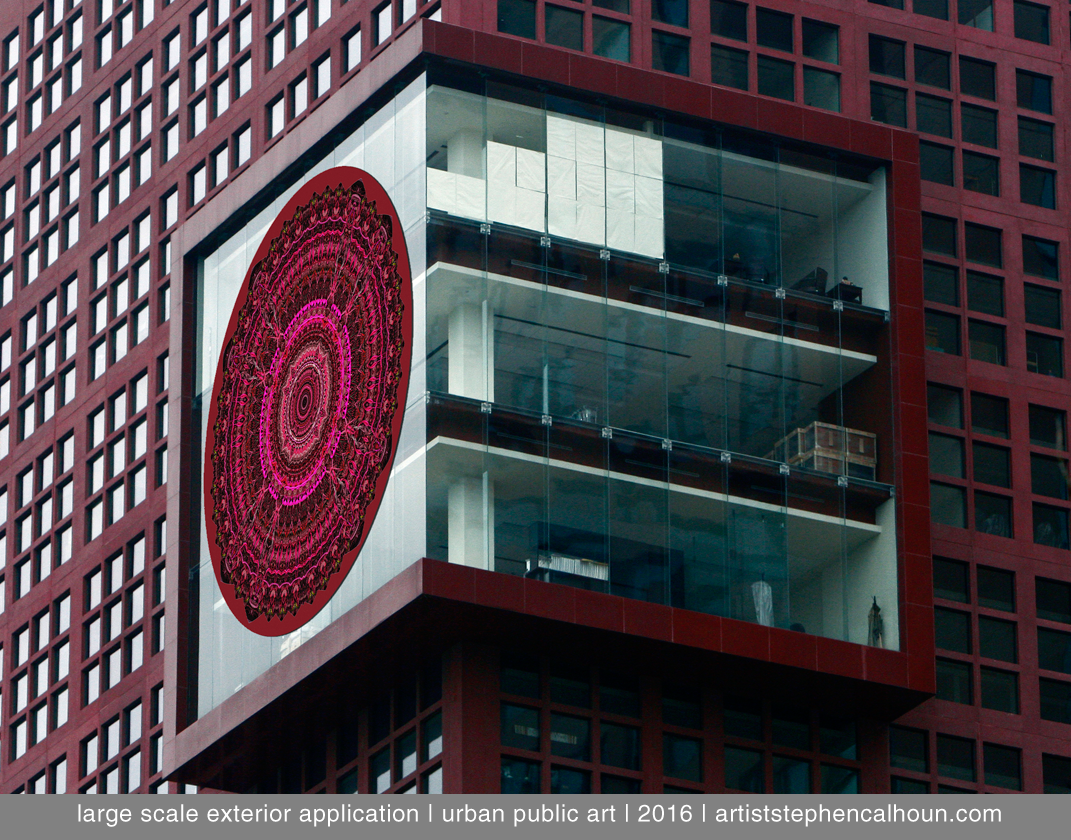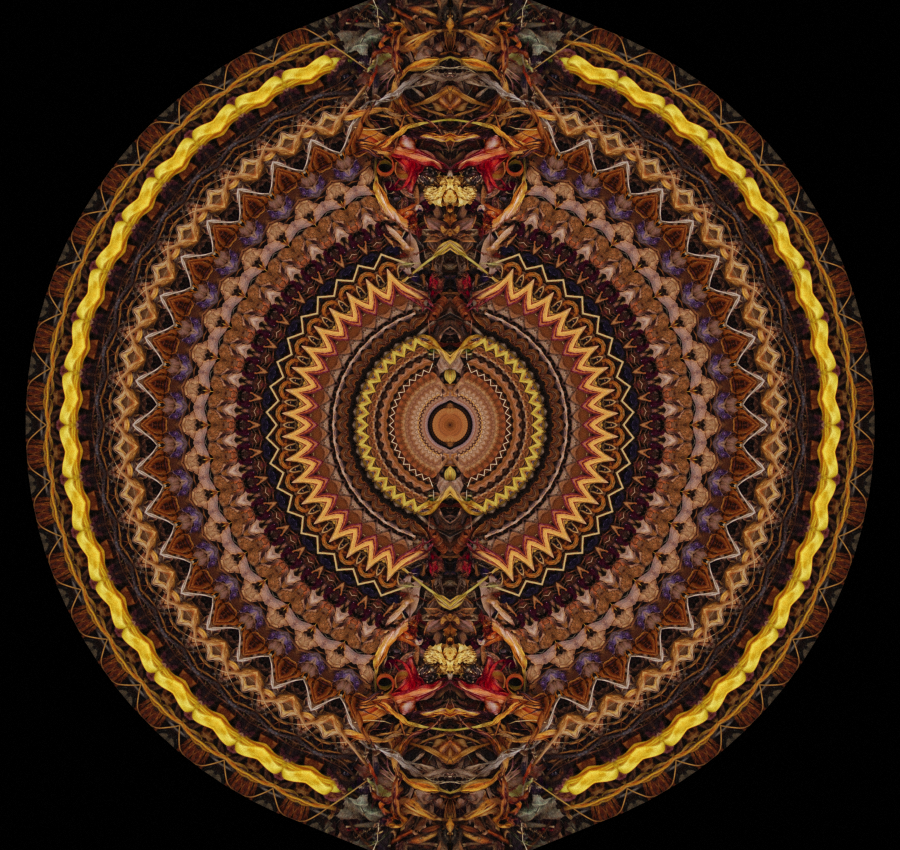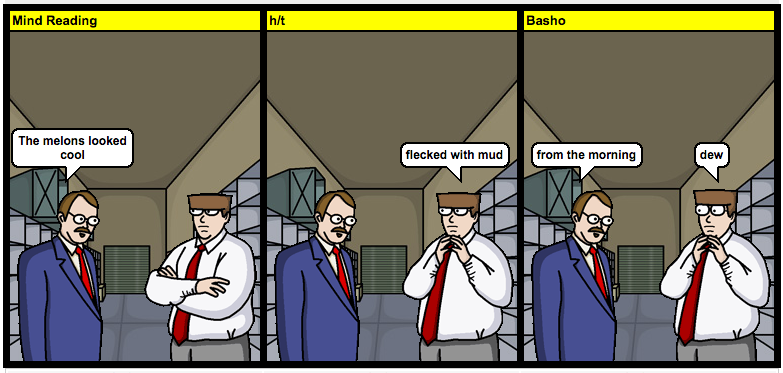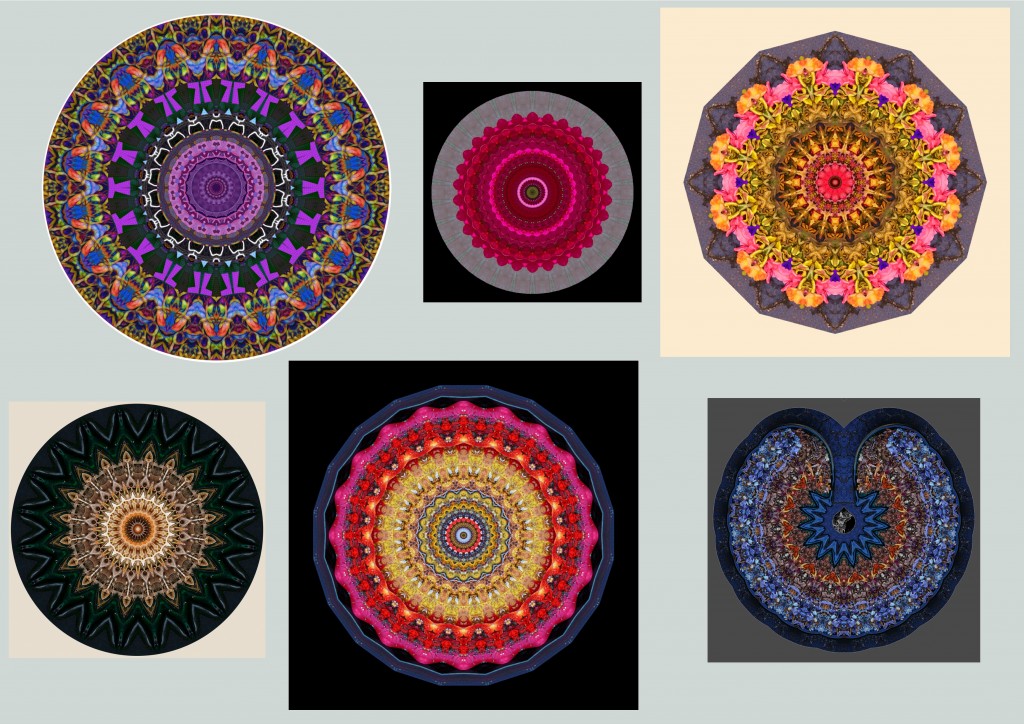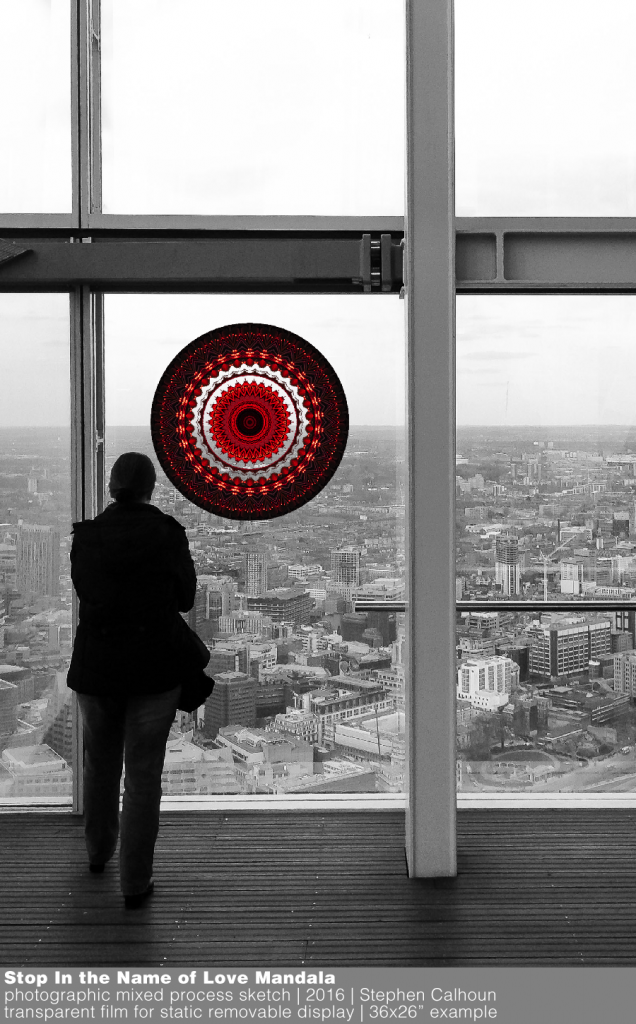bonus:
Category Archives: art, artists
Instructed
Chronic Outside Art Worlds
This is not a post about bongs-as-art. Unfortunately the video I’d like to feature is from VICE, and it can’t be re-embedded. Still, it’s right here and needs to be viewed (5m) before I note its few exemplifications of what I call the 01% thin art world.
First, the subject of the short video is a twenty-one year old college student, although, truth be told, he joined a venture capital group, and, the location for the video is his sleek Manhattan apartment. The young man is clearly monied, entrepreneurial, and, conversant with bongs. He is addressing the question: how such implements might instantly constitute a high end in either the smoking pot or art world?
$100,000 glass sculptures are not unheard of; Dale Chihuly’s chandeliers have sold for well over that amount. (Chihuly chandeliers are large 4-8 feet in length.)
…is actually an accomplished glass blower.
(Edward L. Milstein, Mr. Grey’s father, was around twenty when he co-founded a venture capital firm in NYC.)
Art is flourishing in New York more than anywhere else in America.
The people buying this right now are smokers.
Millennials in Manhattan go to a party implicitly tasked to, hopefully, begin to elevate bongs costing tens of thousands of dollars out of their current niche as high end devices for mere smokers.
Young Benjamin Milstein briefly comments without any guile about how a market might be made in NYC. Take aways, one, throw family money at the challenge, two, enlist apparently accomplished artists/craftsmen and give them a shot at upending the world of 2D hanging art joints on walls. An,d strike while the iron is hot in flourishing NYC!
working class art appreciation:
Filed under art, artists, creative captures, cultural contradictions
I See You
1997: Birth of the Camera Phone from Conscious Minds on Vimeo.
The Mobile Phone in the Hands of the Nepalise People: A Humanistic Perspective of Technology (master thesis, Merilin Piipuu, pdf)
The Art of Making Photos: Some Phenomenological Reflections (Thomas S. Eberle, pdf)
Women on the move: the mobile phone as a gender technology (Carla Ganito, pdf)
Filed under art, artists, cultural contradictions
Settled It!
I would use such a rarified technical term to better describe my artistic position, that there is no reason to actually deploy it! While I contemplate the problem of the insider/outsider artist, I also play around with the designation I grant to myself. There is no way to summarize or integrate the slew of positions that are–at a minimum–personally vibrant. On twitter I have at times tagged posts #outsider, #visionary, #archetypal, #generative, #experimental, #experiential, (and more.) Each such designation fits in their specific way.
Nothing rides or rests on this designation even if it might find its way into an explication gathered from possibilities which inhere to ‘here’s what I am about as an artist.’ Nor can any designation capture the thick part of my practice, the part that is partly described as being underdetermined, stochastic, heuristic, etc..
Still, to my self and for myself, I am an enactivist artist. My subjectivity is situated in a body, in a time and place, in an interface, in a constructively vital ecology. This settles it for the time being.
And, yes, I am dedicated to articulating designations that rub the post-modernity of the art world’s predispositions and normative designations differently. Why?
It seems to be a universal feature of human perception, a feature of the underpinning of human epistemology, that the perceiver shall perceive only the product of the perceiving act. He shall not perceive the means by which that product was created. The product itself is a sort of of work of art. (Gregory Bateson, A Scared Unity, p217)
If we relate this to seeing the art object, the crucial tacit element to this point of Bateson’s is that the entirety of the second and third orders given in the cognition, processes and history of the artist, and which are behind the art object, are not at all features of perception.
enactivist theory:
etec.ctlt.ubc.ca/510wiki/Enactivist_Theory
Tutorial on Embodiment (eucognition.org)
5.1.3. Embodied dynamicism and enactivism“Since the early 1990s the computationalist orthodoxy has begun to be challenged by the emergence of embodied-embedded cognitive science (e.g. Clark 1997; Wheeler 2005; Varela et al. 1991). This approach claims that an agent’s embodiment and situatedness is constitutive of its perceiving, knowing and doing. Furthermore, the computational hypothesis has been challenged by the dynamical hypothesis that cognitive agents are best understood as dynamical systems (Van Gelder and Port 1995). These developments can be broadly grouped together under the heading of embodied dynamicism (cf. Thompson 2007, pp. 10-13). While this approach has retained the connectionist focus on self-organizing dynamic systems, it incorporates this emergentist perspective into a non-computationalist framework which holds that cognition is a situated activity which spans a systemic totality consisting of an agent’s brain, body, and world (e.g. Beer 2000).” (Froese, 2009)
“The paradigm of enactive cognitive science originally emerged as a part of the embodied dynamicist approach in the early 1990s with the publication of the influential book The Embodied Mind by Varela et al. (1991). However, while the enactive approach also emphasises the importance of embodiment, situatedness and dynamics for our understanding of mind and cognition, it has stood out from the beginning by promoting the cultivation of a principled phenomenological investigation of lived experience as a necessary complement to a standard scientific inquiry of the mind (e.g. Varela et al. 1991; Varela 1996, 1999). Moreover, it has recently set itself apart even further by placing a systemic biological account of autonomous agency at the heart of its theoretical framework (e.g. Weber and Varela 2002; Thompson 2004; Di Paolo et al. 2008). This complementary focus on biological (living) and phenomenological (lived) subjectivity clearly distinguishes the enactive approach from the rest of the competing paradigms in the cognitive sciences (cf. Thompson 2007).” (Froese, 2009)
bonus:
Ngaphandle – Part One
Edward M. Gómez on Outsider Art from Sinnlicht on Vimeo.
Definitions?!
RAW VISION : The controversy surrounding the exact definition of Outsider Art and allied fields has been going on ever since awareness of the phenomenon began so here we try to clarify the different aspects.
Essay offers sub-divisions without defining the term itself.
Outsider Art Fair: Over the years, the parameters of Outsider Art have expanded dramatically to include art made by a wide variety of art-makers who share this common denominator of raw creativity. Outsiders come from all walks of life, from all cultures, from all age groups. In recent years, Outsider Artists may have even come to outnumber Insider Artists who have achieved critical validation within the elite art world, and yet who speak with increasingly less clarity and relevance to us about the human experience.
It seems to me obvious that there are more self-trained artists than there are academically trained artists.
Huffington Post 11/20/2014 10 Outsider And Self-Taught Artists Who Use Art To Create Their Own Worlds: The term “outsider art” was first used by art historian Roger Cardinal in 1972 to loop together art made by people living with certain disabilities, as well as those living on the outskirts of society. Unlike most other art movements, outsider artists don’t have much in common besides straying from the norm. They work in different media, throughout different times and places, without shared assumptions or aesthetic styles.
In fact, most outsider artists have or had no idea they would be categorized as such — or even that their art would be seen by someone other than themselves. Therein lies the conundrum — is a celebration of outsider art redemptive tribute or exploitation?
In “How to Look at Outsider Art,” Lyle Rexer defines the tricky genre as “the work of people who are institutionalized or psychologically compromised according to standard clinical norms.” This definition was amended to include those enduring an altered state of consciousness — whether from marginalization or incarceration. “Self-taught art” is a category that often overlaps with outsider art, referencing artwork made without schooling that strays from the norms and styles of the time.
Christie’s : ‘Outsider Art is perhaps a catch-all term,’ explains Christie’s specialist Cara Zimmerman. ‘I tend to classify it as art made by people who weren’t working within the artistic establishment.’
In the United States, she says, the material stems from a folk-art tradition. Most Outsider artists received no formal training and were influenced by pop culture and the world around them rather than other mainstream artists.
The Atlantic The Rise of Self-Taught Artists. Out is the new in. : For an artist to be considered an outsider, he or she must first be brought inside the professional art world by an insider.
Huffington Post 1/30/15 What Is The Meaning Of Outsider Art? The Genre With A Story, Not A Style: There are various ways to make sense of outsider art as a genre. Roberta Smith calls it “a somewhat vague, catchall term for self-taught artists of any kind.“ Lyle Rexer defines it as “the work of people who are institutionalized or psychologically compromised according to standard clinical norms” or “created under the conditions of a massively altered state of consciousness, product of an unquiet mind.” Jerry Saltz argues it doesn’t exist at all, except as a discriminatory boundary preventing untrained artists from their rightful places in the canon.
Artsy – About Outsider Art: A label applied to artworks that have little connection with the art world or are created by people with no formal art training. The term is also applied to artworks by people with psychiatric disabilities and others on the margins of society. However, as more and more examples have been exhibited and subsumed into the historical canon, some have argued that the ‘outsider’ label should be retired.
Hyperallergic. What Does “Outsider Artist” Even Mean?: In a blog post from 2007, dealer Edward Winkleman discusses the issue of intent and his changing perceptions of outsider art:
Being the stubborn loggerhead I am, I can’t get myself unstuck from an assumption about the importance of intent in art. Especially intent with regard to communicating.
Taken to its logical extremes in our debate, however, this assumption has led me to conclude that the work of Henry Darger, for example, is not “Art” because (or so it’s been reported) he had no intention of ever showing it to anyone, meaning it was not created with the intent of communicating anything with anyone, and that then made it something other than “Art.”
Now I can look at Darger’s work and feel my jaw involuntarily drop. I can marvel at the vision. I can delight at the composition and especially the color. But because I know (or think I know) these works were the result of a masturbatory effort, they don’t meet my own definition of fine art, which goes beyond just intent to communicate to include what bnon called, in the thread on child prodigies yesterday, the act of “submerging [one]self in art history as well as surveying the contemporary field and carving out a niche.”
Jerry Saltz on the Outsider Art Fair — and Why There’s No Such Thing As ‘Outsider’ Art: Which brings us to the the horrible Rubicon that still separates so-called “outsider,” “self-taught,” and “visionary” art from institutionally sanctioned official art. Now that even immigration reform can happen, it’s time for MoMA — and all museums — to integrate “outsider art” into their permanent collections and erase that distinction for good. They need to allow these artists to take their rightful places in the canon. In addition to the artists mentioned above, visionaries like Hilma af Klint, Emma Kunz, Bill Traylor, Adolf Wolfli, Martin Rameirez, Minnie Evans, John Kane, Clementine Hunter, Hector Hyppolite, and others must be integrated into the canon. At the Fair, there’s a 1939–1942 town scene by one of the greatest “outsiders” of them all, Bill Traylor, that would easily compare with any Picasso from the same period. Or, indeed, any artist.
With this outmoded discrimination still in place, the story of art is woefully misrepresentative — a lie, even. Millions of viewers and thousands of nascent artists are being denied the chance to see some of the best work made in the last 100 years simply because it was once decided that to be an artist meant having had pre-approved training. It’s a self-perpetuating false distinction…
Filed under art, artists, creative captures, cultural contradictions
Visual Thinking Strategy
A VTS Discussion with First Grade Students from Visual Thinking Strategies on Vimeo.
(source) In his 1997 article Thoughts on Visual Literacy, Philip Yenawine describes visual literacy as:
“…the ability to find meaning in imagery. It involves a set of skills ranging from simple identification (naming what one sees) to complex interpretation on contextual, metaphoric and philosophical levels. Many aspects of cognition are called upon, such as personal association, questioning, speculating, analyzing, fact-finding, and categorizing. Objective understanding is the premise of much of this literacy, but subjective and affective aspects of knowing are equally important.”
The three fundamental questions of Visual Thinking Strategy:
Abigail Housen and, later partnered with Yenawine, structure a theory of development around the experience of art. It has become popular as a basis for pedagogy in some schools, in many museums, and, as a foundational practice for art teachers and docents. (See: VTS Basic Manual: Learning To Think And Communicate Through Art; Housen, and Theory into Practice: The Visual Thinking Strategies, Yenawine. The latter article is available at VTShome.
VTS is very close to being in alignment with my own artmaking ethos, except it is missing the body. The body in this case is the viewing subject.
Here are four questions that could restore the body in the process of aesthetic inquiry:
(1) What do your findings feel like as emotions?
(2) What do your findings feel like in your body?
(3) Characterize your sense of your own experience?
(4) What are you doing to understand your experience?
Filed under art, artists, experiential learning, my research, psychology
Questioned, Again
Oh Good Party has published this month an interview with yours truly, artist Stephen Calhoun.
(Oh Good Party is art advisory and art concierge providing services to their private group of asian collectors, some in Canada, most in China. They invited me to be the second American artist to join their roster of artists.)
On my own website there is an extensive Q&A too.
Filed under art, artists, visual experiments, my art
Outside, Looking Outside
In his pamphlet, Asphyxiante culture, a classic statement of an anti-cultural attitude, the artist Jean Dubuffet relates an instructive anecdote to illustrate the degree to which cultural preconceptions can completely stifle the proper apprehension of anything that resists accepted ideas about art. It concerns a conversation he had with a teacher to whom he tried to expound the hypothesis that throughout history there have always been forms of art alien to established culture and which ipso facto have been neglected and finally lost without a trace. The teacher expressed his conviction that if such works had been assessed by contemporary experts and deemed unworthy of preservation, it was to be concluded that they could not have been of comparable value to the works of their time that had survived. To support this view, he cited the example of some German paintings he had seen in an exhibition. Though these had been executed at precisely the time the impressionist school was directing art into new channels, they bore no traces of that influence. After submitting these forgotten works to a thorough and objective perusal, the teacher felt obliged to admit that they were aesthetically inferior to the work of the impressionists; art criticism had accordingly been perfectly justified in preferring the latter.
Dubuffet points out the stupidity of this sort of reasoning, based as it is on a notion of objective value that betrays the worst kind of cultural myopia: where respected critics have testified their approval, there can be no dissension; bad marks in art can never be forgiven, at least not by layman. Dubuffet stresses the futility of the man’s ‘objective’ certainty, and suggests that it is only as a result of a particular education, of a particular cultural formation that the teacher made the judgement he did. His aesthetic preference was totally determined by these factors. A difference in his background or a difference in the opinion of the experts might well have led to a completely different assessment of the paintings concerned. Instead, the teacher bowed before the prevailing wind emitted by the Establishment, and could consent to find objective beauty only in the place marked out by a superior order. Roger Cardinal, “Cultural Conditioning,” Outsider Art (1972) excerpt | hat tip Petullo Art Collection
Cardinal’s essay bookends, for me, Clement Greenberg’s The Historical Context of the Avant-garde and Kitsch. I’m nominally an outsider artist, not much at all a naive artist, surely am an untrained artist, and in all ways a self-trained artist. Most art is created by self-trained artists; like 99%.
Filed under art, artists, cultural contradictions
Fronting Front
Rock stars seems to be an odd metaphor for art, given the state of the world of rock music, and, even more so, given the difference between the scarcity model of high art that underlines art world status, and, the popularization model–based in hits and reach–of pop music. There isn’t a good way to bridge Justin Bieber with Al Wu Wei, or Adele with Damien Hirst. Anyway, I wonder about this–while Mr. Bidwell’s sense does, once again, moves me to consider the similarities and disparities betwixt the art and music markets.
Jens Hoffman asserts “real creativity doesn’t necessarily happen anymore in LA or NY.” Is not the objective truth that real creativity has always happened most everywhere? The validation of artistry supplied by the entanglement of capitalism with the sociology of normative artistic practice provides a rather thin warrant for speaking of necessity, as Hoffman does so.
I’m being charitable. NY and LA are art centers because of the scale of capitalism and culture, and laws of institutional attraction that unfolded in the two largest American cities. From my idiosyncratic perspective, real creativity and the sites of its happening is not a question resolved by affirming the obvious, that L.A. and NYC are America’s principle art centers. First order creativity does happen where it does happen, and this would tend to disrupt the facile tautology that reduces to: city A is an art center because it is a center for art.
It will be fascinating to observe both ideas become joined by the outcome of the curatorial process which will unfold for the sake of shaping a Triennial roster of international art stars and their local counterparts.
In music, the democratization inherent in the self-organizing operations of the internet have led the mainstream music business to counter this an solidify a global cartel; and then affirm by its reach a mostly reactionary (as against an avant-garde,) “pop music.”
bonus:
Filed under art, artists, Cleveland, cultural contradictions
360 degree Longing For Wilderness + Evidence of Existance
Longing for Wilderness from EpicScapes on Vimeo.
Watch on tablet. Retina iPad is spectacular. The point of this new technology is the user can use the touchscreen to move around the image frame. Browser kludge allow for this navigation too if your desktop system is up-to-date. Negs on Safari.
Filed under art, artists, creative captures, visual story, web 2.0+
peak: FRONT International Cleveland Triennial for Contemporary Art
In 2018 Cleveland will be the site of its first art triennial, FRONT International Cleveland Triennial for Contemporary Art. This video captures the initial public meeting at Transformer Station. Fred Bidwell is the executive director. He has put together a stellar team. This video is full of interesting hints and some very fast paced exposition and contextualization.
The theme of the triennial is: Cleveland. An American City. Something like 30+ international artists and 50+ artists from our region, NEO, will be presenting art in whatever mediums the curators choose to represent the theme; or, better to say, front the theme.
This event is literally a game-changer in a region. Cleveland, itself an art-filled city, and the region, have upwards–I guess–of 500+ working artists. Fortunately, others are already working to organize artists not admitted (through its curation process) into the triennial to exhibit in a kind of shadow triennial, FRINGE. The total amount of ‘art action’ to be unfolded in 2018 is unknowable today, yet, I have a glorious feeling Front International is going to turn out to be one of 2018’s signal art events in the world.
It’s going to be a lot of fun and a learning experience to take it all in.
As for my own aspirations, I don’t have any. Cleveland has lots of great artists! And my own art is rigorously out-of-step. (What formally trained artist–I’m self-trained–in their right mind would intentionally aim to cause visual epiphanies for all ages?) I hope I get to help peddle t-shirts, or do something useful.
(However, now that I reflect on these matters, my art does literally recycle bits of Cleveland that I pick up off the ground or buy from local garage sales, so, in fact, much of my art is full of, made up of, this American city. So, there’s that!)
Filed under art, artists, Cleveland, speculations
“Golden Mean” has the same letters as “demon angel!”
The Golden Ratio calculated to a record 2 trillion digits, on Ubuntu, in the Cloud!
Golden Ratio/fibonacci poetry is a thing.
Aurea Mediocritas!
1.618 ad infinitum!
Never repeating, always intriguing
Fibonacci born; phi!
Golden Section behold!
Creation sequence, nature’s frequence
Mathematical phenomena; phi!
Heaven’s divine proportion!
Ancient mystery, living history
Infinite and eternal; phi!
-John Sarber
Filed under art, artists, science
Looking Around, Called to Attention
Juno Goes to the Getty from Hammer Museum on Vimeo.
My own artistic goals include a first order objective: that the art work bring the potential viewer to a full stop and motivate this viewer to use their vision and presence to seek further experience. This moves into the second order goal: to have the ecology of this interaction support the joining of enactive resources to the task of deeper seeking.
Yet, the slightly less pretentious aim is to inspire a viewer to spend a considerable amount of their time with the art work. I’m very pleased when the time adds up to over a minute, and have been overjoyed when it adds up to five minutes, ten minutes or more.
As the creator of the art work, I go into it knowing that the secret to inspiring seeking is embedding both accessible and obscure patterns into the image, and, inflecting the greater patterned context with the gravity of archetypes.
As my own experiments have developed along new vectors of hypothesizing about patterns and pattern recognition and the ecology of enactive experience, some of these experiments have gone about reducing complexity and dialing up the archetypal impact. Mandalas, circles, spheres, fourness.
The other crucial aspect is scale. Somewhere between four and seven feet demands attention.
This post has links to a lot of interesting articles about viewing and viewing in museums. Some know of the “seven second rule,” a rule derived from research into the average time a museum goer spends in front of an art work. Many museums devote considerable resources to learning about the behavioral propensities of their audience. Of course this results in an informed response and has led to an increasingly sophisticated ‘technics’ of presentation.
from this article:
“The difference between a good and bad work of art is how long it detains us. When you walk into an art gallery there is no start or finish, no interval. You walk around, look at what takes your fancy, move on, stop, go away, come back. It’s a cruel, casual blood sport. Piles of rubbish forming the silhouette of faces, or a photograph of the artist naked in a beach hut are nice ideas but essentially one-liners – you move on quickly. The simplest, most final way to dismiss a work of art is to say it does not reward serious attention.”
Classic Vs. Contemporary Art: A Test Of Museum-Goers’ Interest
The Art of Slowing Down In a Museum
Evaluating the Practical Applications of Eye Tracking in Museums
Filed under art, artists, psychology
Systematic Ways to Look at Seeming Chaos
'Flying Dutchman' Draft Film Trailer by Alan Nguyen and Sutu from Alan Nguyen on Vimeo.
This Electrified Pirate Ship Was Made with a Virtual Reality Paintbrush
h/t Peter Kirn at Create Digital Music
Filed under art, artists, creative captures, nature, visual story
Working Away From the Center
Virgins with T-squares
and compasses, guarding
the heavenly blackboards.And the angel of numbers
reflective, flying
from the 1 to the 2, from the 2
to the 3, from 3 to the 4.Dead chalk and sponges
rule and erase
the light of the heavens.Not the sun, moon or stars,
not the sudden green flash
of the lines and the lightning,
nor the air. Only haze.Virgins without T-squares,
without compasses, weeping.And on the dead blackboards,
the angel of numbers,
lifeless, laid out
on the 1 and the 2
on the 3, and the 4…(The Angel of Numbers, Rafael Alberti, translated by Jerome Rothenberg)
Only gradually did I discover what the mandala really is: Formation, Transformation, Eternal Mind’s eternal recreation. And that is the self, the wholeness of the personality, which if all goes well is harmonious, but which cannot tolerate self-deceptions. (Carl Jung, Memories, Dreams and Reflections)
So you see, in a moment during a patient’s treatment when there is a great disorder and chaos in a man’s mind, the symbol can appear, as in the form of a mandala in a dream, or when he makes imaginary and fantastical drawings, or something of the sort. (Carl Jung)
A mandala spontaneously appears as a compensatory archetype during times of disorder. (Carl Jung) [h/t carljungdepthpsychology.wordpress.com]
There are four notes, (suppose these to be notes-to-self,) that come all the way up and to the center when I reflect on why it is that the mandala has taken over my creative practice.
These are simple notes too, and these represent the starkest capture.
(1) Depressed at the rise of Trump and nihilist Trumpism.
(2) Demoralized at the failure to satisfactorily meet my worldly obligations.
(3) Understand the inner order reflected in the enthusiasm for manifesting mandalas is only a potential reordering, and the proof of this is in the outer disorder.
(4) Unhappy and tired in the wake of the sharp arrivals due to the constant processes of death and loss that have struck over the past years.
I wear my depression very lightly. Optimistic. Youthful outlook.
My contemplative practice is the first balancing act. I note my creative agency is powerful too, yet, I haven’t a clue as to what is going on, except to distrust to a niggling degree that I am on the right track. I have to suppose this distrust of my own creativity is something to work through at this rather early yet auspicious juncture. This has nothing to do with my personal qualification of my creative product, it has to do with what this feels like in the context of outer disorder. It comes as no surprise that powerful inner motives are working me over a bit at the expense of outer order.
There is in this a fraught paradox: betwixt the rush and rushing forward of inspiration and ideas, and, the yet to be shaped command to, in actuality, set this aside for the purpose of getting the house in order.
The energetic aspect is clear enough to me. After all, I am not painting mandalas or setting fine grains of sand to a blueprint. Once the mathematics clicked for me, the opportunity presented itself fully: there are all sorts of archival photographs which may lend themselves to manipulation. These photos now come up again to be resuscitated.
(One image in this post presents how this is done.)
Still, am I creating mandalas? What is coming up and out seem to me reductions too, and also pieces symbolize eyes and sphincters. The images that consist of patterns of concentric circles nevertheless are unitary objects. Also, the direction of experimentation already is disrupting the simple concentricity.
Yes, creating mandalas is soothing. It occurs to me also that this is of a piece with my artistic mission, and, this also puts in 2nd order cybernetic relations a deeper aspect of the kitschy facile gimmicks I am employing as propositions in various visual experiments. Those relations are about learning.
As for my own psyche, I’m waiting for the dream. The only dream that recently arrived was optimistic, and this seemed to me its fault.
A magical, sacred, and perfected environment of the Buddha, which
denotes the order and harmony of an enlightened mind, and built on their
perfect wisdom. The purified circle of an enlightened being, an environment
wherein the endless compassion of the enlightened one is expressed.”
(C.G. Jung: ‘Mandala Symbolism’)
Oh, there’s this–see its opening and conclusion:
Theoretical Foundation for Jung’s “Mandala Symbolism”
Based on Discrete Chaotic Dynamics of Interacting Neurons
Vladimir Gontar (International Group for Chaos Studies at Ben-Gurion University of the Negev, Beer-Sheva, Israel)
Unities
One is the loneliest number that you’ll ever do
Two can be as bad as one
It’s the loneliest number since the number oneNo is the saddest experience you’ll ever know
Yes, it’s the saddest experience you’ll ever know‘Cause one is the loneliest number that you’ll ever do
One is the loneliest number, whoa-oh, worse than twoIt’s just no good anymore since you went away
Now I spend my time just making rhymes of yesterdayOne is the loneliest number
One is the loneliest number
One is the loneliest number that you’ll ever doOne is the loneliest
One is the loneliest
One is the loneliest number that you’ll ever doIt’s just no good anymore since you went away
(Number)
One is the loneliest (number)
One is the loneliest (number)
One is the loneliest number that you’ll ever doNillson/Edwards
I’ve been making mandalas. This represents a regression in both the terms of psyche, and, my own growing artistry. This is a local reconfiguration for the sake of doing different experiments concerned with the singularity given by the whole “O,” the eye, the core, the centrifugal oneness. Empirically, mandalas don’t grip the viewer for the same reasons a complex work chock full of partially hidden patterns and relations grip someone. Yet, as the dictionary tells us, mandala means magical circle.
Yet, everybody at times enjoys partaking of some regression! Going backward sometimes means moving back in time toward innocence, or moving to a previous point at which point the bad mojo had not arrived, or been elected.
Mandalas are the warm blanket of the world of created manmade forms.
My mandalas…
Read more: Three Dog Night – One (is The Loneliest Number) Lyrics | MetroLyrics
Surrender
This fascinating video about generative art supposes that our age will be the age of data. Except for this meaningless statement, this is well worth six plus minutes.
The sound of a bell
struck off center
vanishes in haze.(Buson)
Filed under art, artists, technology
Beneath the Surface
Sally Mann Photos at Edwynn Houk
All art is at once surface and symbol. Those who go beneath the surface do so at their peril. Those who read the symbol do so at their peril.
?—Oscar Wilde
Filed under art, artists, creative captures
Success & the Infinite
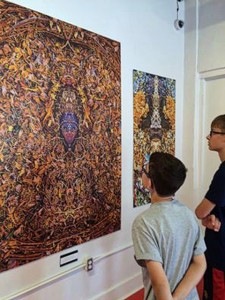
SUCCESS AND THE INFINITE
(originally published on LinkedIn)
The following question was pitched my way recently: how long does it take you to produce a finished piece of art?
Obviously there can only be a generalized answer to this question. On average. . .
The query motivated me to consider how long different steps take, to break the total time down, even if the exercise ends up a matter of estimating an average or mean time.
But, soon enough, being a systems’ thinker, my reflection wandered toward more vague territories, and then into territories where concepts such as interval, or beginning-and-end, come to be defeated close to the outset.
Back up from the moment of one of your own greatest successes. If someone asked you, ‘how long did it take you to produce this success?’ what would go into your answer?
My own reflection on this question-and, for me, a produced art work is always a moment of great success–wandered soon into intriguing considerations which take into account crucial aspects that tend to break apart mere regard for the time interval mechanical elements required.
I’m going to mention a few aspects. Before I do so, my hope is you’ll do a short exercise and reconsider an example in your own life under the light of the following different lenses.
An aspect of any success clearly is defined by all the learning from experience, and, learning from mistakes. If asked how long something took, do we usually sever from our consideration all most necessary but unplanned prior preparations?
Similarly, how much of a time factor in a great success is all of our formal and informal training?
When I turn to the fact of inspiration, and so turn to the genesis of a great success, and consider its origin and the starting point given long before this success was assured, I cannot help but be impressed by how discrete time is inadequate to the task of measuring inspiration.
My brightest ideas emerged from an unfolding story and its colorful conditions. This becomes doubly impressive if we then regard the nature of inspiration to have been a collaborative effort and see, then, a streaming of stories, and, conditions about conditions, all unfolding through a kind of mysterious coordination until these flex and fulminate together into the emergent a-ha, and, up and out comes the bright idea. Tell me, how long did this take?
I next bring into resolution the aspect of the spontaneously fortuitous contingency, what we of course better know as serendipity, and instantly the inadequacy of even the concept of intervalic time, is defeated. At this point our greatest success is seen to be an aspect of an almost cosmic element of lucky timing, of not only being in the right time and place in the concrete sense, but in the right time and place in the sense of an ecology of timing and various places, and, grooved by precedents both planned and unplanned.
Finally, look at the relational genealogy of a success. This is what is meant by the trope, standing on the shoulders of giants. This element is woven into serendipity too, because if we track a success backward in time to where its eventual subject is founded in the past by our: interest, or obsession, or mission, or capability, it is inevitable that we will see these centering commitments to have themselves a founding story. Very often the creation story in the background of our future devotion starts with the happiest of accidents. Those accidents land us: in the right community, around the right people, bring us to our mentors/teachers/guides, with the supporting partner, living amidst the most terrific, and helpful, neighbors, colleagues.
We also see that we can no more separate out from our current success, any of these required prior successes, and failures, and, any small yet required learning, and any chance yet required encounter or precedent.
So it is a web of relationships comes to the front and center, in our regard of what was required for this small or major success. The genealogical current defies both time itself and timing. It provides the awesome “just so” in the deep background of every success.
Yes, one should count themselves a little bit lucky, or maybe, a lot lucky, to stand at the apex of a great success. You and your great success are at the summit of an iceberg, whereas the hidden, necessary, contingent assembly of elements cannot be temporally measured.
To rephrase a Zen aphorism for my purposes here:
the infinite is in the finite of every success
– – – – – – – – – –
|| Stephen Calhoun’s creative successes are being exhibited in a one man show of his photographic and generative art work, The Grasp of Order, at The Gallery At Gray’s, 10717 Detroit Ave – through September 30. open 9/24 noon-4pm – open during the work week, call 216-226-3300 for hours.
galleryatgrays.com
artiststephencalhoun.com
Filed under art, artists, serendipity, visual experiments, my art
Observers
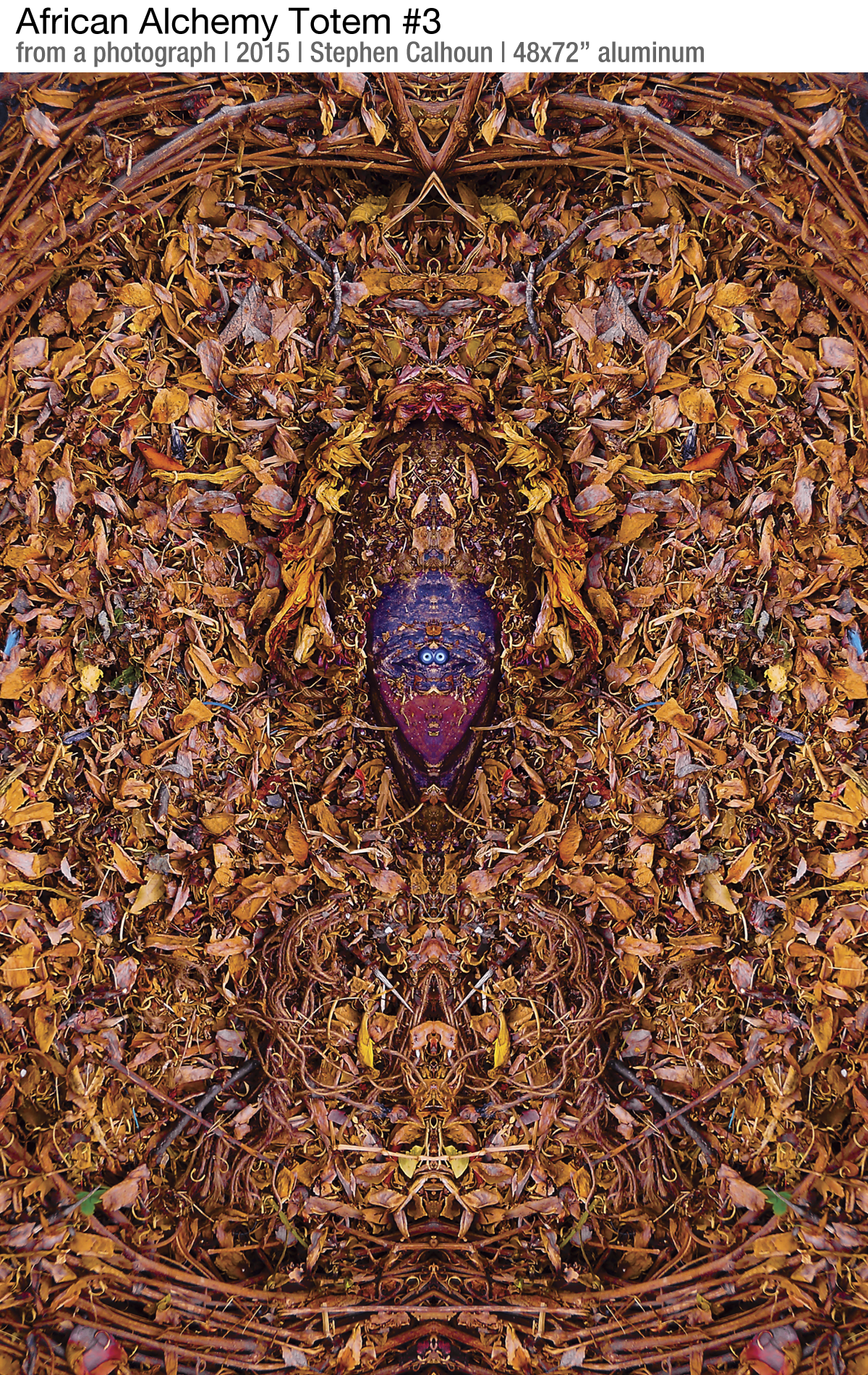
All of us are watchers–of television, of time clocks, of traffic on the freeway–but few are observers. Everybody is looking, not many are seeing. P.M. Leschak)
The Gallery At Gray’s is located on the west side about 30 minutes from where I live in Cleveland Heights. Over the past five months my one man show, The Grasp of Order, has been installed, I haven’t spent very much time hanging out at the gallery. Yet, I did so on Saturday.
I knew some friends were going to stop in, and, I hoped some complete strangers would also drop in too. Several of this latter type did indeed stop in and the encounters were both gratifying and edifying.
Certainly, I like to talk about my work and creative processes, but I much more enjoy hearing people tell me about their experience with my experiential art work.
My art works, by intention and by design, provide open ended opportunities for experiencing their effect, rather than for deciphering their import. My work doesn’t enjoin any authoritative import at all.
Laura and Gary Dumm are longtime, well known, Cleveland artists; and their collaboration includes being married. I didn’t know them. However, in a rather audacious act of social media hunting and gathering I started to request connections to artists and others–for which Facebook reported to me numerous mutual friends.
As a consequence, the Dumms showed up at the gallery. This affirmed my social media move was worthwhile. What great people, what a pair!
Gary Dumm wrote this later on FB:
Today Laura and I stopped by Grey’s Auction House to view the large digitally enhanced photographic works of Stephen Calhoun. They are, in general, mind-blowing: a symphonic collection of the debris and detritus of nature and civilization restructured by the artist in such a way that these supposedly dead things dance energetically. Simpler designs are mandala-like. Some (like the attached image) appear as Bosch and Bruegel inspired dreams while others vibrate, figures destroying and reforming themselves as in the “Matrix” movies. To me they are pictures of the dancing Wu Li masters, where physics meets mysticism: all is energy, and nothing is ever lost.
Filed under art, artists, Cleveland, visual experiments, my art

